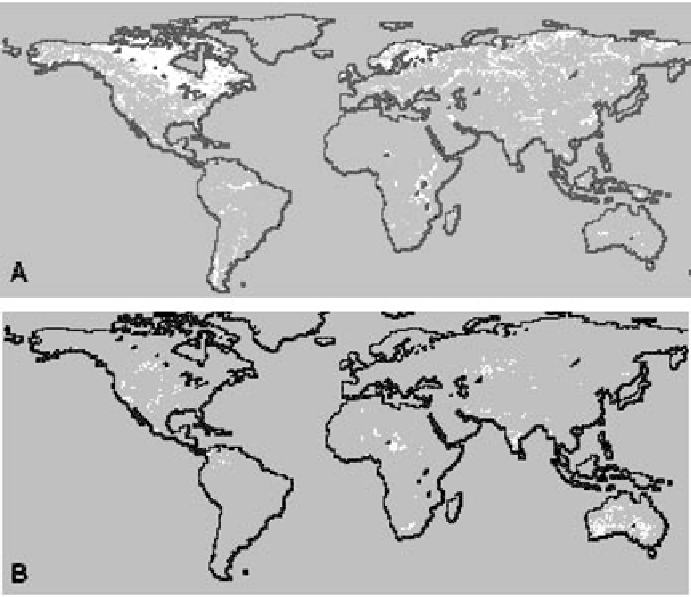Environmental Engineering Reference
In-Depth Information
includes saline lakes but excludes estuaries and other mainly marine em-
bayments. The distinction between a small shallow lake or pond and a wet-
land is not clear, and neither is that between a very slow, wide spot in a
river and a lake or reservoir with high water throughput. Remember, all
aquatic habitats occur across a continuum of physical attributes, such as
depth and water velocity.
Permanent lakes are common where more precipitation occurs and
where geology allows for formation of water-retaining basins (Fig. 6.2A).
Some areas have geological histories that result in more lakes. For example,
if we compare the distribution of wetlands (Fig. 4.11) to the distribution of
freshwater lakes, relatively more lakes than wetlands occur in northern
North America, and wetlands are relatively important in northern Asia and
northeast Europe. Intermittent lakes (those that dry sometimes) are distrib-
uted sparsely throughout the world, with greater numbers in drier areas
(Fig. 6.2B). The western United States, south Australia, India, central Asia,
and central Africa all have high numbers of intermittent lakes.
Humans have made many lakes and ponds. Most regions inhabited by
humans with few natural lakes and even moderate precipitation have sig-
nificant numbers of ponds and reservoirs. The large number of rivers in the
Northern Hemisphere that have been altered by the construction of dams
was discussed in Chapter 5.
More small than large lakes exist in the world. However, the sum of
the area of lakes globally of each size is fairly constant, with the few very
FIGURE 6.2
Global distribution of permanent (A) and impermanent (B) lakes (data from
Cogley, 1994).


Search WWH ::

Custom Search